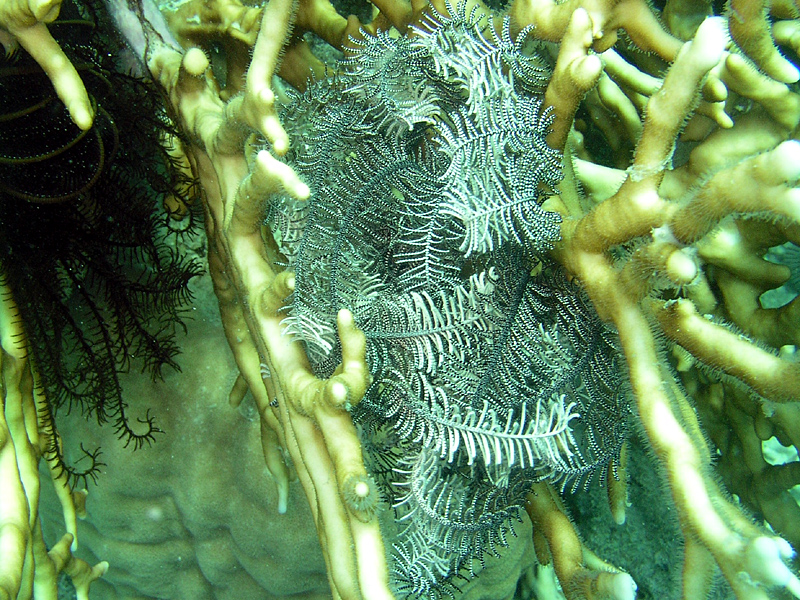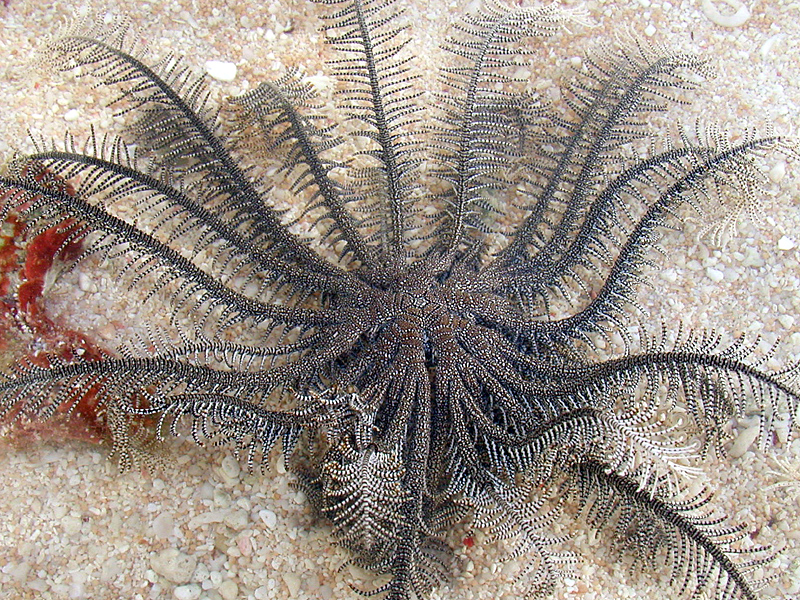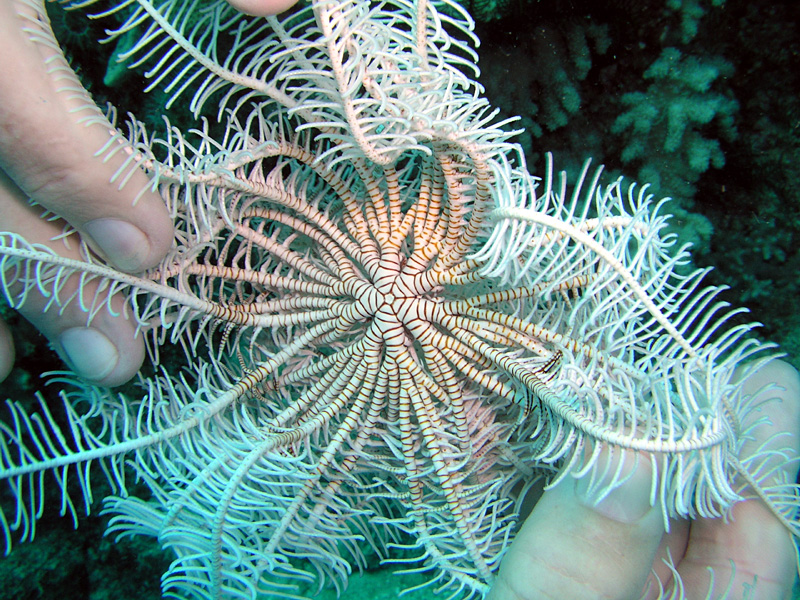�
�

©Lyle Vail and Anne Hoggett: Clarkcomanthus mirabilis (centre) in a typical living position. This is the most common colour pattern at Lizard Island.

©Lyle Vail and Anne Hoggett: Pan shot of the underside of Clarkcomanthus mirabilis. The speckled colour pattern, small centrodorsal plate and lack of cirri is distinctive.

©Lyle Vail and Anne Hoggett: The underside of an unusual mostly-white specimen of Clarkcomanthus mirabilis.
�
���
Clarkcomanthus mirabilis

©Lyle Vail and Anne Hoggett: Clarkcomanthus mirabilis (centre) in a typical living position. This is the most common colour pattern at Lizard Island.

©Lyle Vail and Anne Hoggett: Pan shot of the underside of Clarkcomanthus mirabilis. The speckled colour pattern, small centrodorsal plate and lack of cirri is distinctive.

©Lyle Vail and Anne Hoggett: The underside of an unusual mostly-white specimen of Clarkcomanthus mirabilis.
Kingdom
Animalia
Phylum
Echinodermata
Class
Crinoidea
Order
Comatulida
Family
Comatulidae
Genus
Clarkcomanthus
Species
Clarkcomanthus mirabilis
Colours
Distinguishing features
Featherstars in the family Comatulidae are distinguised from all others by having terminal segments of the oral pinnules modified to form a comb. Comatulids a also have a distinctive "feel" due to well developed hooks on most pinnules that cause them to cling like velcro.
Clarkcomanthus mirabilis adults have up to 50 rather stiff arms and no cirri. The centrodorsal plate is characteristically small in this species, compared to the surrounding radial plates. Most specimens are rather beautifully mottled brown and white or red and white.
Size
- Size data has not been obtained.
Depth range
- Depth range data is not yet available.
Synonyms
Distribution
Distribution and habitat preferences
Semi-cryptic, living entwined in branching corals.
Local abundance
- Lizard Island: Moderately abundant.
Web resources
References
References that assist with identification
- Rowe, F.W.E., A.K. Hoggett, R.A. Birtles and L.L. Vail (1986). Revision of some comasterid general from Australia (Echinodermata: Crinoidea), with descriptions of two new genera and nine new species, Zoological Journal of the Linnean Society, 86: 197-277. LIRS catalog number 198.
- Summers, M. M., C.G. Messing and G.W. Rouse (2014). Phylogeny of Comatulidae (Echinodermata: Crinoidea: Comatulida): A new classification and an assessment of morphological characters for crinoid taxonomy, Molecular Phylogenetics and Evolution, 80: 319-339. LIRS catalog number 1813.
Other references
- Lanterbecq, D., G.W. Rouse and I. Eeckhaut (2009). Evidence for cospeciation events in the host-symbiont system involving crinoids (Echinodermata) and their obligate associates, the myzostomids (Myzostomida, Annelida), Molecular Phylogenetics and Evolution, doi: 10.1016: jymev20090811. LIRS catalog number 1274.
- View all references







